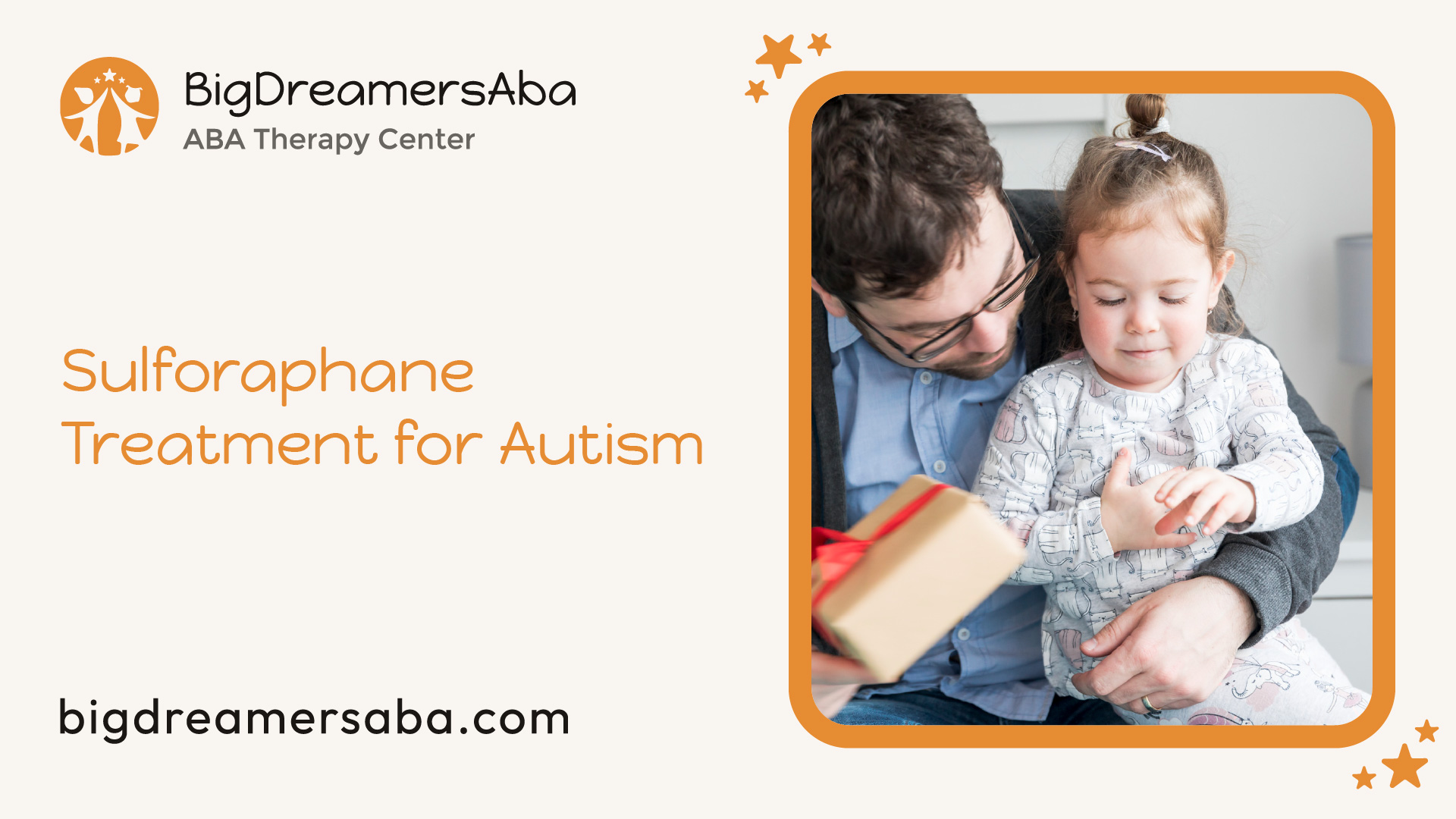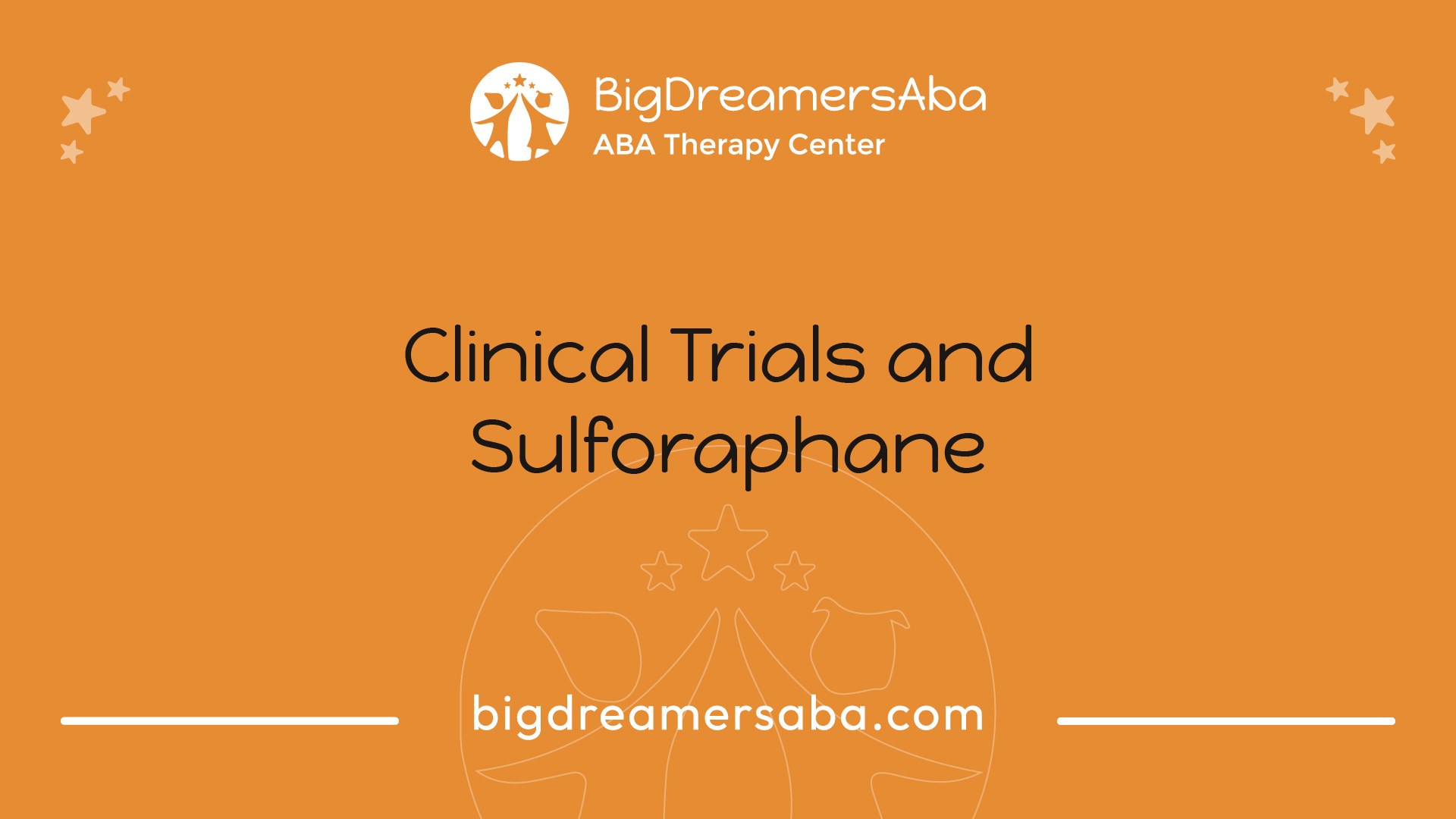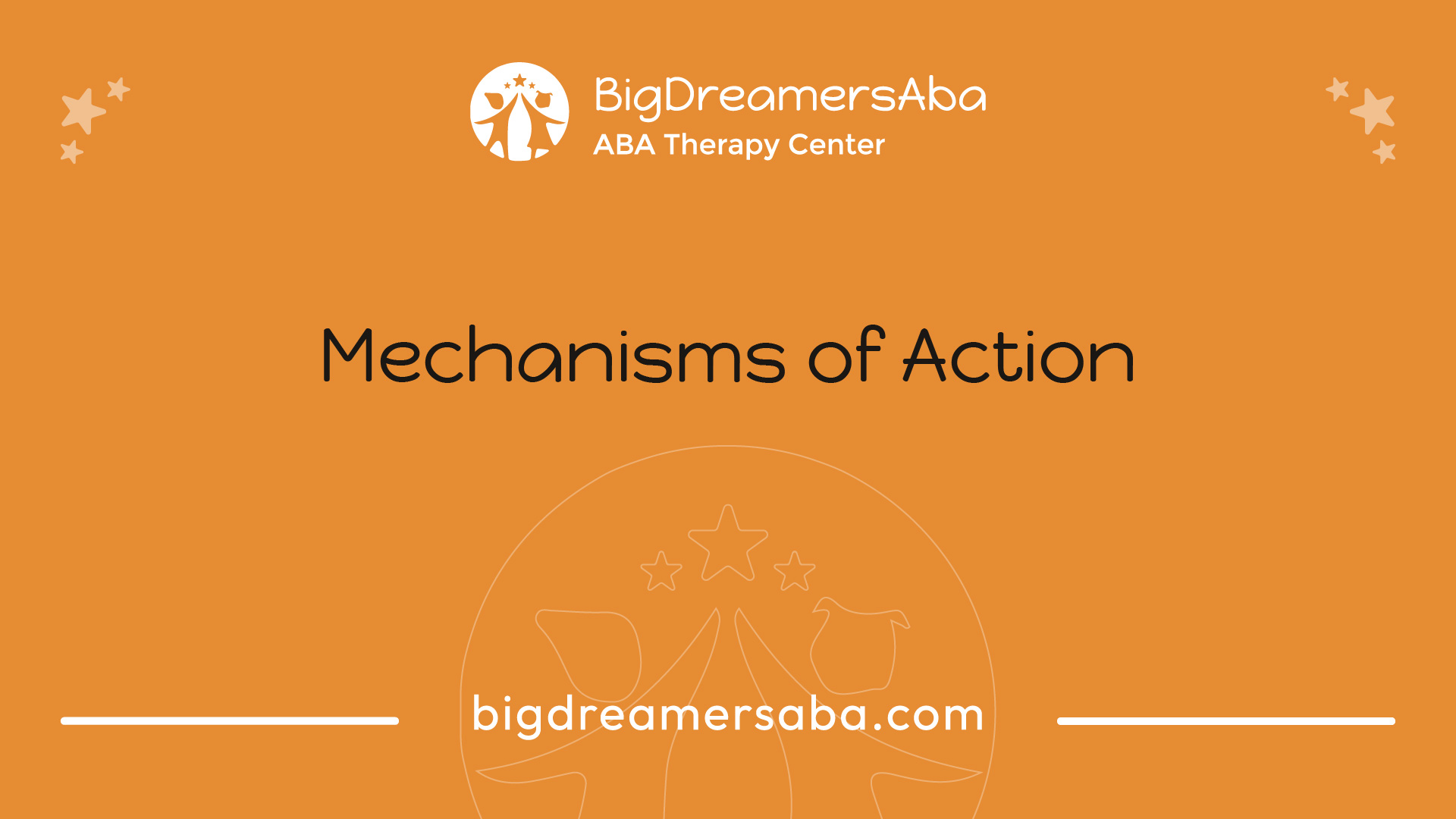Sulforaphane Treatment for Autism
Discover the potential of sulforaphane treatment for autism. Unveil breakthrough research and its implications for autism care.

Understanding Sulforaphane for Autism
Sulforaphane, a natural compound found in cruciferous vegetables, has gained attention for its potential benefits in the treatment of autism spectrum disorder (ASD). In this section, we will explore the concept of sulforaphane treatment for autism and delve into the research findings surrounding this approach.

Exploring Sulforaphane Treatment
Sulforaphane treatment involves the use of sulforaphane, a phytochemical present in vegetables such as broccoli, cabbage, and kale, as a potential therapeutic intervention for individuals with autism. The interest in sulforaphane as a treatment stems from its diverse biological effects, including antioxidant, antimicrobial, anticancer, anti-inflammatory, anti-aging, neuroprotective, and antidiabetic properties. These properties make sulforaphane a promising candidate for addressing the complex nature of autism.
Research Findings on Sulforaphane
Several studies have examined the effects of sulforaphane treatment on individuals with autism, yielding encouraging results. A notable study conducted in 2014 found that sulforaphane treatment improved symptoms in children with autism, as identified by urinary metabolites correlating with clinical improvements [2]. This study provided valuable insights into the potential efficacy of sulforaphane in managing symptoms associated with autism.
Furthermore, a randomized, double-blind, placebo-controlled clinical trial conducted in 2020 demonstrated that sulforaphane could serve as an adjunctive treatment for irritability in children with autism spectrum disorder [2]. These findings highlight the potential benefits of sulforaphane in addressing specific behavioral aspects associated with autism.
In addition to individual studies, a systematic review encompassing multiple clinical trials concluded that sulforaphane appears to be a safe and effective treatment option for individuals with autism, showing a significant positive correlation between sulforaphane use and ASD behavior and cognitive function. The review analyzed five clinical trials, providing a comprehensive overview of the collective evidence supporting the use of sulforaphane in the treatment of autism.
These research findings underscore the potential of sulforaphane as a therapeutic option for individuals with autism. However, it is important to note that further research is needed to fully understand the mechanisms of action and to establish optimal dosage and treatment protocols. The exploration of sulforaphane as an intervention for autism holds promise and may pave the way for future advancements in autism treatment.
As the research on sulforaphane treatment for autism continues to evolve, it is crucial to consult healthcare professionals and specialists to determine the most appropriate approach for individual cases. By staying informed about the latest developments in this field, individuals and families affected by autism can make more informed decisions about potential treatment options.
Clinical Trials and Sulforaphane
Clinical trials play a crucial role in evaluating the efficacy and potential benefits of sulforaphane for the treatment of autism. These trials provide valuable insights into the effectiveness and safety of this compound in individuals with Autism Spectrum Disorder (ASD).

Sulforaphane Efficacy Studies
A systematic review conducted on five clinical trials demonstrated a significant positive correlation between sulforaphane (SFN) use and improvements in ASD behavior and cognitive function. The trials indicated that SFN appears to be a safe and effective treatment option for individuals with ASD [1].
Three double-blind, randomized placebo-controlled trials specifically focused on SFN and ASD. These studies showed significant improvement in various areas, including behavior, social responsiveness, irritability, lethargy, stereotype, hyperactivity, and verbal communication in individuals with ASD [1].
Potential Benefits of Sulforaphane
Sulforaphane has been found to impact various physiological pathways associated with ASD. These include the regulation of redox metabolism/oxidative stress, mitochondrial dysfunction, immune dysregulation/neuroinflammation, febrile illness and heat shock response, and synaptic dysfunction. By modulating these pathways, sulforaphane may contribute to the improvement of ASD symptoms.
Open-label studies involving SFN supplementation also showed significant improvements in behavior, social responsiveness, and cognitive scores in individuals with ASD. Additionally, some participants experienced improvements in oxidative stress, redox metabolism, amino acid metabolism, neurotransmitter-related metabolites, hormones, and chemical sphingomyelin.
It is important to note that while sulforaphane has shown promise in clinical trials, further research is necessary to fully understand its mechanisms of action and long-term effects. However, the existing evidence suggests that sulforaphane may hold potential as a beneficial treatment option for individuals with ASD.
In the next sections, we will explore the mechanisms of action of sulforaphane and delve into its side effects and safety profile. Understanding these aspects is crucial to gain a comprehensive understanding of sulforaphane as a potential treatment for autism.
Mechanisms of Action
To understand the potential efficacy of sulforaphane in the treatment of autism, it is important to explore its mechanisms of action. Sulforaphane (SFN), an isothiocyanate found in cruciferous vegetables, has shown promise in alleviating autistic behavior.

How Sulforaphane Works
Research suggests that sulforaphane impacts various physiological pathways associated with Autism Spectrum Disorder (ASD). One of its primary effects is the regulation of redox metabolism and oxidative stress. SFN indirectly increases the antioxidant capacity, copes with oxidative stress, and raises glutathione levels, which play a crucial role in protecting cells from damage.
Furthermore, sulforaphane has been found to preserve mitochondrial function, decrease oxidative stress, and protect against toxicity in cells. Mitochondrial dysfunction has been implicated in ASD, and the ability of SFN to support mitochondrial health may contribute to its therapeutic effects.
Impact on Physiological Pathways
Sulforaphane's therapeutic potential for autism extends beyond redox metabolism and mitochondrial function. SFN has been shown to modulate immune dysregulation and reduce neuroinflammation, which are commonly observed in individuals with ASD. Additionally, it has been found to influence febrile illness and heat shock response, as well as synaptic dysfunction, which are relevant factors in the context of autism spectrum disorders.
By impacting these various physiological pathways associated with ASD, sulforaphane holds promise as a potential treatment option. Its multifaceted effects, including antioxidant, anti-inflammatory, and neuroprotective properties, make it a compelling candidate for further investigation and application in the field of autism treatment.
Understanding the mechanisms of action of sulforaphane provides valuable insights into how it may exert its beneficial effects on individuals with autism. As research continues to uncover further insights, the implications for the treatment of autism spectrum disorders may become even more significant.
Side Effects and Safety
When considering any treatment, it is important to understand the potential side effects and safety profile. In the case of sulforaphane treatment for autism, it is crucial to evaluate the risks and adverse events associated with this approach.
Risks and Adverse Events
Participants in the studies exploring sulforaphane treatment for autism have reported some side effects and adverse events. These include insomnia, flatulence, constipation, weight gain, vomiting, diarrhea, increased aggression, exacerbation of seasonal allergies, and in some cases, seizures. It is important to note that these adverse events were reported by participants and may not be experienced by every individual. However, it is essential to be aware of these potential risks when considering sulforaphane treatment.
It is recommended to closely monitor individuals undergoing sulforaphane treatment for any signs of adverse effects. If any concerning symptoms occur, it is important to consult with a healthcare professional to assess the situation and determine the appropriate course of action.
Safety Profile of Sulforaphane
While there have been reports of side effects, sulforaphane has shown a generally favorable safety profile. The most common side effects reported in studies of sulforaphane treatment for autism included insomnia, flatulence, constipation, weight gain, vomiting, diarrhea, increased aggression, and exacerbation of seasonal allergies [1]. It is important to note that these side effects were generally mild to moderate in severity.
It is worth noting that the studies conducted on sulforaphane treatment have primarily focused on short-term effects. More research is needed to fully understand the long-term safety and efficacy of this treatment option. If you are considering sulforaphane treatment, it is advisable to discuss it with a healthcare professional who can provide guidance based on your specific circumstances.
As with any treatment, it is essential to weigh the potential benefits against the risks. Sulforaphane has shown promise as a treatment option for autism and other neurological disorders. It has been found to indirectly increase antioxidant capacity, cope with oxidative stress, raise glutathione levels, protect against toxicity in cells, preserve mitochondrial function, and decrease oxidative stress. However, individual responses may vary, and it is important to consider the unique characteristics and needs of each person with autism.
In conclusion, while sulforaphane treatment for autism shows potential, it is important to be aware of the associated risks and potential adverse events. Close monitoring and consultation with healthcare professionals are recommended to ensure the safety and well-being of individuals undergoing this treatment. Further research is needed to fully understand the long-term safety and efficacy of sulforaphane as a treatment option for autism.
Practical Applications
When it comes to the practical applications of sulforaphane in the treatment of autism, there are two main approaches: sulforaphane supplementation and incorporating sulforaphane into overall treatment plans.
Sulforaphane Supplementation
Sulforaphane is a sulfur-rich compound found in cruciferous vegetables like broccoli, bok choy, and cabbage. It has been shown to provide powerful health benefits [4]. While it is possible to obtain sulforaphane through dietary sources, it may be challenging to consume the necessary amounts for therapeutic effects. In such cases, sulforaphane supplementation can be considered.
Supplements containing sulforaphane are available in various forms, such as capsules or powders. It's important to choose high-quality supplements from reputable manufacturers to ensure purity and effectiveness. The dosage and duration of supplementation should be determined in consultation with a healthcare professional experienced in autism treatment.
Incorporating Sulforaphane into Treatment
In addition to supplementation, incorporating sulforaphane into overall treatment plans can be beneficial for individuals with autism. Research suggests that sulforaphane may have a positive impact on physiological pathways associated with autism spectrum disorder (ASD) [1]. Here are some practical ways to incorporate sulforaphane into treatment:
- Dietary Changes: Encourage the consumption of sulforaphane-rich foods, such as raw or lightly steamed cruciferous vegetables like broccoli and cabbage. Raw vegetables generally have higher levels of sulforaphane compared to cooked vegetables [4]. Steaming vegetables for one to three minutes is the best way to optimize sulforaphane levels when cooking. However, it's important to consider individual preferences and dietary restrictions when implementing dietary changes.
- Broccoli Sprout Extract: Broccoli sprout extract is a concentrated source of sulforaphane. It can be consumed in the form of capsules or incorporated into smoothies or other foods. Broccoli sprout extract has shown potential in reducing fasting blood sugar levels in individuals with type 2 diabetes, but more research is needed to determine its effects on autism.
- Collaboration with Healthcare Professionals: It is essential to work closely with healthcare professionals experienced in autism treatment to determine the most appropriate ways to incorporate sulforaphane into an individual's overall treatment plan. They can provide guidance on dosage, potential interactions with other medications or treatments, and monitoring of progress.
It is important to note that sulforaphane treatment for autism is an emerging field, and more research is needed to fully understand its efficacy and optimal usage. Therefore, individuals and caregivers should always consult with healthcare professionals before making any significant changes to treatment plans.
By exploring sulforaphane supplementation and incorporating it into treatment plans, individuals with autism and their caregivers can explore potential benefits and discuss appropriate options with healthcare professionals.
Future Research Directions
The exploration of sulforaphane treatment for autism has shown promising results, but further research is needed to uncover additional insights and understand the full implications for autism treatment.
Uncovering Further Insights
Ongoing research efforts are focused on expanding our knowledge of how sulforaphane works and its effects on individuals with autism spectrum disorder (ASD). Researchers are investigating the specific mechanisms of action by which sulforaphane impacts the physiological pathways associated with ASD. These pathways include the regulation of redox metabolism/oxidative stress, mitochondrial dysfunction, immune dysregulation/neuroinflammation, febrile illness and heat shock response, and synaptic dysfunction.
By further understanding these physiological pathways, researchers aim to uncover the specific ways in which sulforaphane can effectively alleviate the behavioral and cognitive symptoms associated with autism. This knowledge will contribute to the development of more targeted and personalized treatment approaches.
Implications for Autism Treatment
The positive outcomes observed in clinical trials and open-label studies have significant implications for the treatment of autism. Sulforaphane has demonstrated efficacy in improving behavior, social responsiveness, irritability, lethargy, stereotype, hyperactivity, verbal communication, and cognitive scores in individuals with ASD [1]. These findings suggest that sulforaphane could be an effective treatment option for individuals with autism.
Further research in this field may lead to the development of standardized protocols and guidelines for the use of sulforaphane in autism treatment. This includes determining optimal dosages, treatment duration, and identifying potential subgroups of individuals with autism who may benefit most from sulforaphane supplementation.
Moreover, ongoing research may shed light on potential long-term effects and safety considerations of sulforaphane treatment. Understanding the safety profile of sulforaphane is essential to ensure its appropriate use in individuals with autism, taking into account any potential risks or adverse events associated with its use.
By continually advancing our knowledge through rigorous research, we can enhance our understanding of sulforaphane's potential as a therapeutic option for individuals with autism. This research may ultimately contribute to the development of more comprehensive and effective treatment strategies for individuals on the autism spectrum.
References
[1]: https://www.ncbi.nlm.nih.gov/pmc/articles/PMC7527484/
[2]: https://www.webmd.com/vitamins/ai/ingredientmono-1070/sulforaphane
Recent articles

Why ABA Therapy Works for Non-Verbal Children with Autism

How Parent Training Enhances Therapy Outcomes for Children
